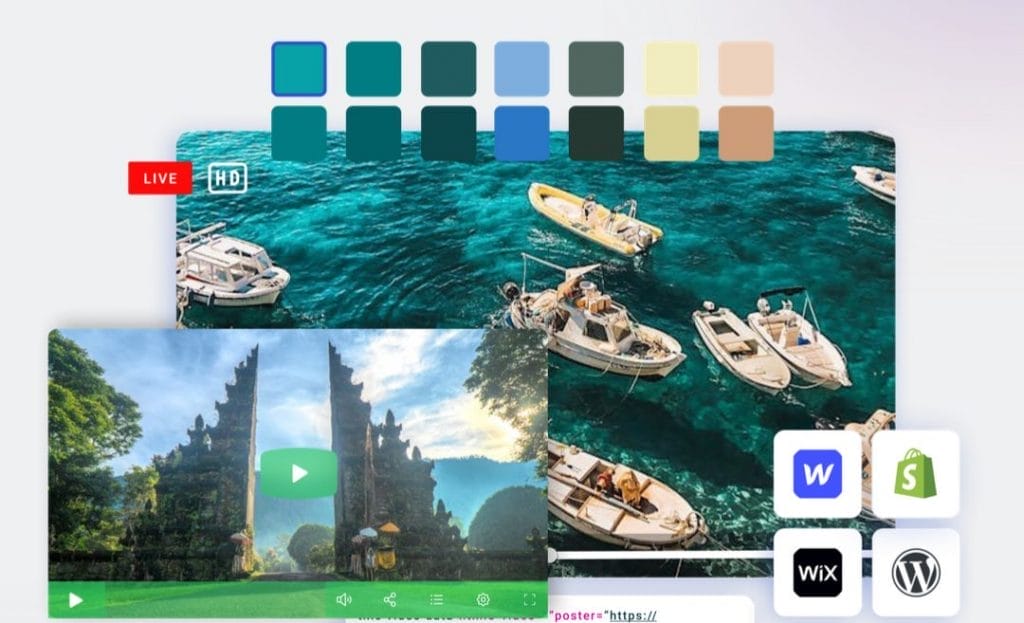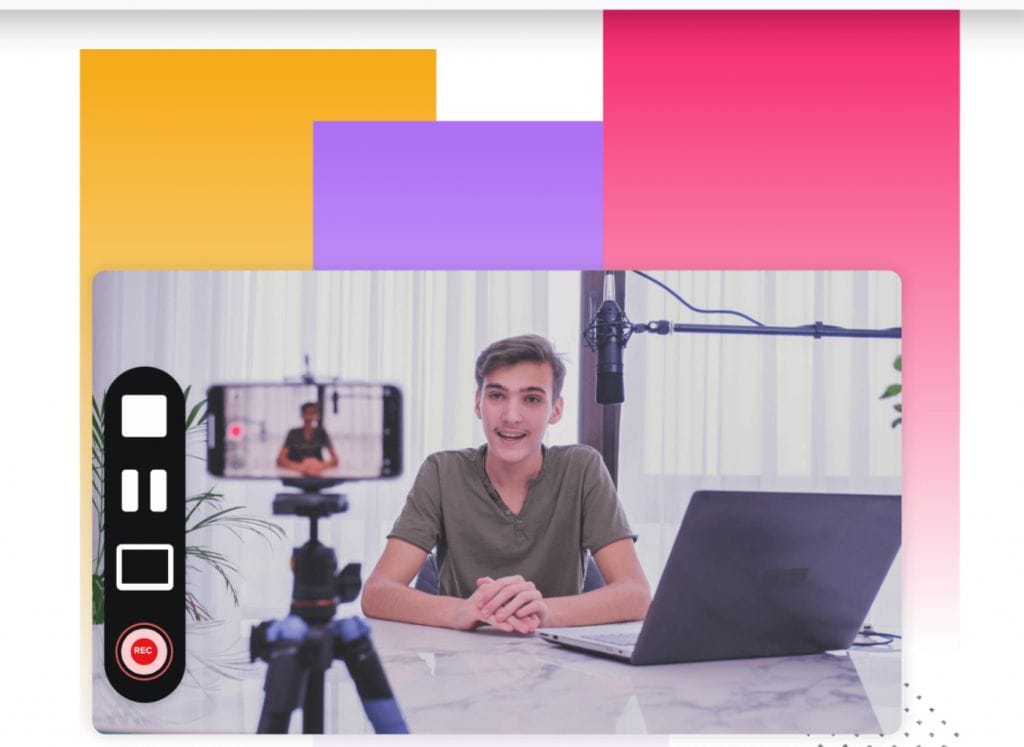Learn about 4K resolutions in 2025, why it matters, and the requirements for creating content in 4k resolution. Also, discover the best platform to create, edit, and host 4k videos seamlessly.
As technology advances, so does video quality, which now precedes other video elements. This means, great video content on a poor resolution, let’s say 480p, won’t achieve much results compared to when recorded on a 4k resolution.
Today. viewers now prefer videos that are sharp, magnify content details, and offer an immersive viewing experience—All these and more are what 4k resolution brings onboard.
Think of it this way: watching your favorite movie in 1080p is like looking through a clean window, while watching it in 4k resolution is like removing the window altogether.
Hence, to remain top of your niche in 2025 and beyond as a brand, small business, creator, or marketer, creating videos in 4k resolution is non-negotiable.
If that sounds like you, you’ve come to the right post as we will analyze everything you need to know about 4k resolution, including its benefits, requirements, what the future holds, and the best platform to create 4k resolution videos.
Let’s begin.
Table of Contents
Key Takeaway
- For video editors, photographers, and designers, 4k resolution offers greater flexibility in post-production. The additional pixels allow you to crop, zoom, and modify footage without a major drop in quality.
- Editing 4K video smoothly requires a computer with a fast processor, sufficient RAM at least 16GB , and high storage like SSDs.
- If you’re planning to upload, stream, or share 4K content online, a fast and stable internet connection is key. Uploading 4K videos can be extremely time-consuming on a slow network.
- Innovations like 8K upscaling, AI-driven editing tools, and advanced HDR (High Dynamic Range) support are enabling creators to produce even more stunning, immersive visuals.
- Designed for modern creators, Adilo makes it easy to upload, manage, and deliver 4k videos without loss of quality.
What is 4K Resolution?

4k resolution refers to a display resolution of approximately 4,000 horizontal pixels, typically 3840 x 2160 pixels for consumer media and 4096 x 2160 pixels for professional cinema.
This means a 4k display contains over 8.3 million pixels, four times the pixel count of traditional Full HD (1920 X 1080).
The higher pixel density results in sharper, clearer, and more detailed images, allowing viewers to sit closer to larger screens without noticing any pixelation.
Plus, streaming services like Netflix, YouTube, and Disney+ offer a growing library of 4K content, with around 85% of newly produced shows and films available in 4K formats.
Benefits of 4K Resolution

At this point, you’ve already gotten a glimpse of why you need 4K resolution. However, here are more benefits:
Crisp Visual Quality
With over 8.3 million pixels on the screen, images appear sharper, colors look more accurate, and fine details like the texture of fabric or movement of water become easier to notice.
So, when watching a nature documentary on a 4k TV, you can see the fine details of an eagle’s feathers or the individual blades of grass in a savanna scene, these are details that would appear blurred or lost in lower resolutions. Similarly, gaming on a 4k resolution gives a more immersive experience.
Flexible Editing
For video editors, photographers, and designers, 4k resolution offers greater flexibility in post-production. The additional pixels allow you to crop, zoom, and modify footage without a major drop in quality; an advantage not easily available with lower resolutions.
Future Proof Standard
Choosing 4K today helps ensure that your equipment and videos remain compatible with future content and device standards. Plus, about 85% of new shows, movies, and online videos are produced in 4K or higher resolutions.
Also, video platforms like Netflix, YouTube, and Amazon Prime video are increasingly prioritizing 4K delivery.
Bigger Screen Sizes
4K resolution works well for larger screen sizes without any major loss in picture quality. The higher pixel density allows users to enjoy bigger displays, such as 55-inch, 65-inch, or even 85-inch TVs at reasonable distances without seeing noticeable pixelation.
Similarly, large 4K monitors in workspaces make multitasking easier by offering more room for side-by-side windows without a clustered appearance.
Limitations of 4K Resolution

While 4K resolution seems to be taking the lead in video quality requirement, it’s not without limitations:
Hardware Demands
To fully experience or work with 4K content, you need devices that can handle the increased processing load. This includes a 4K capable TV or monitor, a graphics card that supports 4K output, and in many cases, updated HDMI cables (preferably HDMI 2.0 or higher).
Also, editing 4K video smoothly requires a computer with a fast processor, sufficient RAM at least 16GB , and high storage like SSDs.
Large File Size
Since 4K video carries four times the pixel information of 1080p, file size naturally becomes much larger. A one hour 4K video recorded at a high bitrate can easily exceed 20–30GB, compared to about 5–8GB for 1080p.
Bandwidth Intensive
Streaming 4k content requires much higher internet bandwidth than lower resolutions. On platforms like Netflix or Disney+, streaming in 4K requires a stable internet speed of at least 25 Mbps, while some services recommend up to 50Mbps for the best experience.
This means that in areas with limited or unstable internet connections, viewers may experience frequent buffering, lower quality streams, or an inability to access 4K resolution videos at all.
What Are the Requirements for Creating Content in 4K Resolution?
Creating content in 4K resolution won’t be possible without the below requirements:
4K Capable Camera

This could be a professional cinema camera, a DSLR/mirrorless camera, or even a high-end smartphone. Today, models like the Song A7 IV, Canon EOS R6, or iPhone 15 pro offer native 4K video recording with excellent color depth and frame rate options like 30fps, 60fps, or even 120fps.
It’s also important to choose a camera with good stabilization and flexible range to handle different filming conditions.
4K Monitor
Editing on a lower resolution screen may cause you to miss small flaws or artifacts that are visible when viewed in 4K resolution. Hence, professional monitors like the Dell UltraSharp U2723QE or LG 27UK850-W offer accurate color reproduction, larger workspaces, and pixel perfect precision.
In addition, when color grading, sharpening footage, or working on visual effects, a 4K monitor ensures you see your content exactly as viewers will experience it, helping you maintain high production standards.
High-End PC

Image credit: Lisa
Without a high-end PC, creators often encounter lag, slow rendering times, and crashes during video editing. Hence, editing 4k resolution videos smoothly requires:
- High performance processor such as Intel Core i7/i9 or AMD Ryzen 7/9
- At least 16GB of RAM, though 32GB is recommended for heavier projects
- A dedicated GPU like an NVIDIA RTX 4070 or AMD Radeon RX 7800 XT
- A large storage such as solid-state drive (SSD)
Internet Speed
If you’re planning to upload, stream, or share 4K content online, a fast and stable internet connection is key. Uploading 4K videos can be extremely time-consuming on a slow network.
Platforms like YouTube recommend an upload speed of at least 20–30 Mbps for smooth 4K content uploading.
If you’re streaming live in 4K, you’ll need even more—a minimum of 25 Mbps upload speed is ideal to maintain a stable and high quality stream without buffering or frame drops.
Proper Lighting
Good lighting is often overlooked when creating 4K resolution content. However, 4K captures much more detail, as such poor lighting conditions become even more noticeable, revealing unwanted shadows, noise or inconsistent color.
Hence, using softbox light, LED panels, or natural lighting helps create even illumination, enhances the subject’s features, and reduces post-production correction.
Development and the Future of 4K Resolution

When 4K resolution first entered the mainstream conversation in the early 2010s, only large production studios could afford the cameras, storage, and processing power needed to work with it.
Fast forward to 2025, and things have changed dramatically. Today, over 78% of new cameras offer native 4K recording. Even smartphones like the iPhone 15 Pro and Samsung Galaxy S24 Ultra, now support 4K video at high frame rate, making it easy for creators at all levels to shoot sharp, vibrant footage.
On the editing and production side, 4K workflows are becoming accessible too. With laptops with Intel Core Ultra processors and GPUs like the NVIDIA RTX 4070, editing 4K videos is now possible.
Looking ahead, analysts from Grand View Research forecast that the global 4K technology market will grow at a compound annual growth rate (CAGR) of 8.8% from 2024 to 2030, driven by demand for higher quality streaming, content creation, and gaming experience.
Also, innovations like 8K upscaling, AI-driven editing tools, and advanced HDR (High Dynamic Range) support are enabling creators to produce even more stunning, immersive visuals.
FAQs
Is 4K resolution better than 1080p?
Yes, 4K resolution offers four times more pixels than 1080p, resulting in sharper, clearer, and more detailed images.
Which devices play at 4K resolution?
Many modern TVs, monitors, laptops, gaming consoles like PS5 and Xbox Series X, and smartphones support 4K playback.
Can I film in 4k on my smartphone?
Yes, many newer smartphones, such as the iPhone 15 Pro and Samsung Galaxy S24 Ultra, allow you to record videos in 4K resolution.
Do I need a 4k monitor to edit 4k videos?
No, but using a 4K monitor is recommended for accurate editing, as it lets you see the full detail and quality of your footage.
How much storage do I need for 4k content?
4K videos are large; depending on bitrate and length, you may need at least 1TB or more of storage if you’re working with multiple projects.
Create, Edit, and Host 4K Resolution Videos Seamlessly With Adilo
As 4K continues to dominate video production and consumption trends, choosing the right hosting platform is crucial. That’s where Adilo, a top notch video hosting platform comes in.
Adilo helps bridge the gap between creating stunning content and making sure it’s delivered seamlessly to viewers everywhere. Designed for modern creators, Adilo makes it easy to upload, manage, and deliver 4k videos without loss of quality.
This video hosting platform supports ultra-high definition streaming—crisp, smooth, and professional.
Plus, with features like adaptive bitrate streaming, aspect ratio, cloud storage, DRM protection, and advanced analytics, Adilo ensures your 4K resolution videos not only look great but also stay secure and perform efficiently across all devices and internet.








